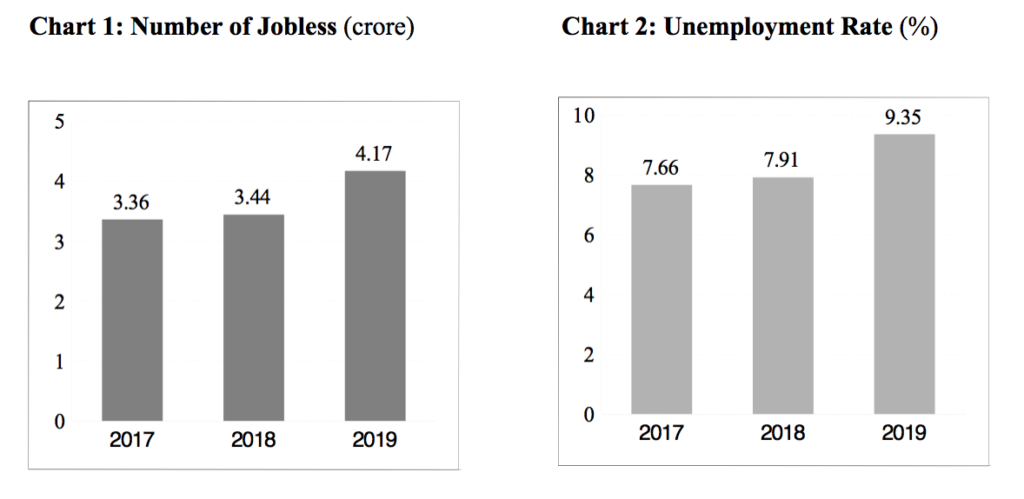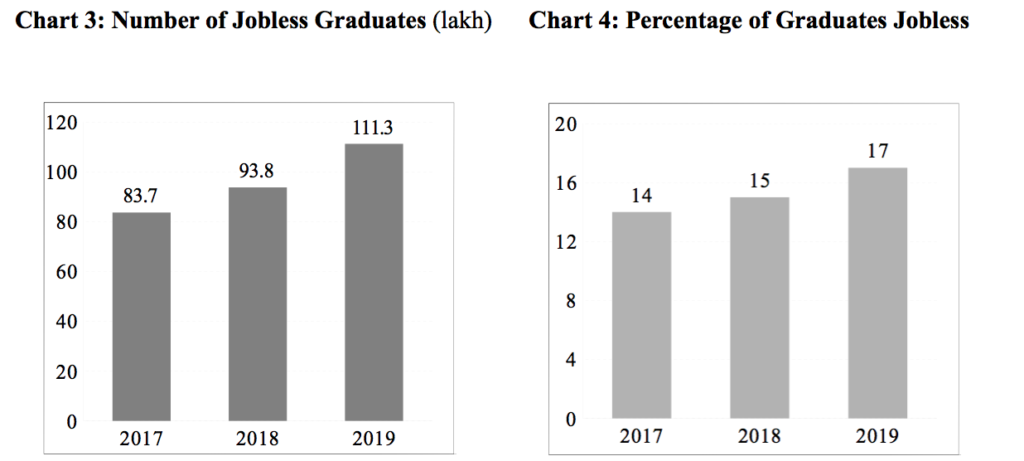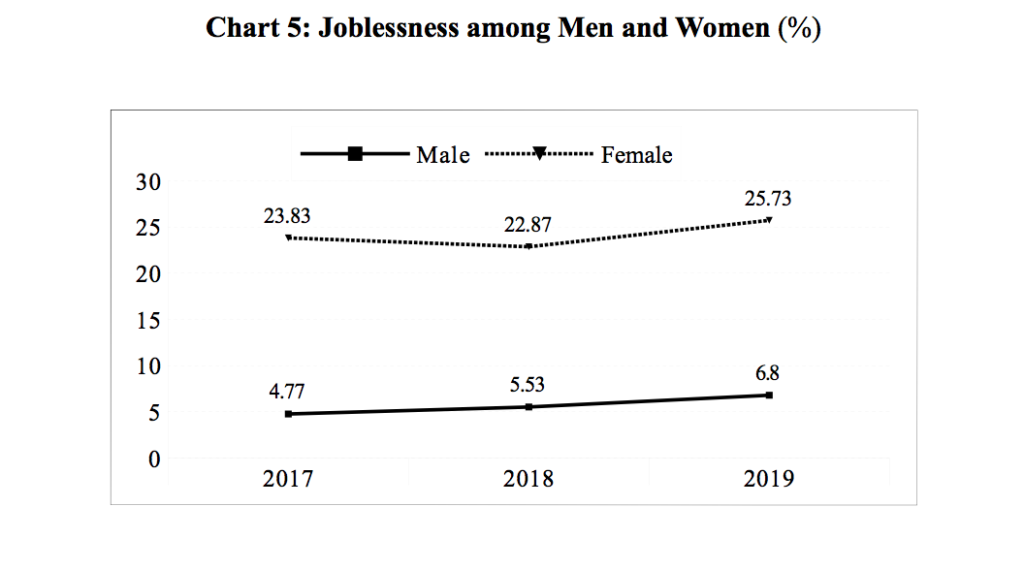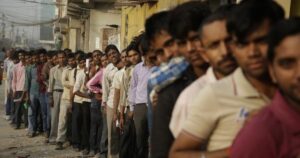Finally, the government has released the suppressed report on unemployment, now that elections are done and dusted with. Meanwhile, joblessness has worsened dramatically with an estimated 4.17 crore people unemployed, according to another recent report of the CMIE (Centre for Monitoring Indian Economy), based on a similar sample survey.
The government had directed the National Sample Survey Organisaton (NSSO) to carry out the Periodic Labour Force Survey (PLFS) to get estimates of employment and unemployment on an annual basis. The first such survey was done in 2017–18. That report had said that joblessness was at a 45–year high of 6.1%. But the latest report of CMIE’s periodic surveys shows that the unemployment rate was much higher in 2017 (7.66%) and has steadily worsened since then, standing at a whopping 9.35% as of April 2019 (see Chart 2).

In numbers, this means some 4.17 crore persons are unemployed and willing to take up jobs (Chart 1). Included are both those actively looking for jobs as well as those who may have become frustrated and were, at the time of survey, not actively looking for jobs.
The CMIE’s report, released a few days ago, makes for shocking reading. There has been an over 24% increase in the number of jobless persons since January–April 2017 to the same period in 2019. The major part of this increase has actually taken place between 2018 and 2019, coinciding with the period when the government was actively suppressing the PLFS report.
17% Graduates Jobless
As has always been the trend, unemployment is particularly high among those with a graduate degree or higher qualifications. CMIE’s report says that in Jan–Apr 2019, joblessness among these educated sections was 17% (Chart 4), almost double that of general unemployment rate.
In numbers, this means that some 1.1 crore graduates are unemployed. An additional 2.2 crore persons who are between 10th to 12th standard pass-outs are unemployed. Not surprisingly, illiterate persons have the lowest unemployment share of about 2%, mainly because they are the poorest and have to undertake whatever kind of job is available in order to survive.

But, what happened to all the skill development programmes and the entrepreneurship incentives (like Mudra) which the Modi 1.0 government had tom-tommed? That’s something Modi 2.0 needs to answer because if they simply continue with that approach, joblessness is not going to get controlled. Prime Minister Narendra Modi has appointed senior BJP leader Nitin Gadkari as the MSME (medium, small and micro enterprises) minister which means they want to give this sector (destroyed by the twin shocks of demonetisation and GST) some attention. But what will that be?
High Women’s Unemployment
Another feature of the unbridled jobs crisis is women’s joblessness. It was always high but as Chart 5 shows, the crisis has worsened. According to the CMIE report, women’s joblessness rate stands at an incredible high of 25.7%—that means every fourth woman in the labour force is unemployed.

With men’s joblessness at 6.8%, clearly a disproportionately large number of women are unemployed, although this is a constant feature of the Indian economy.
This is another area that has received much lip service but practically no attention on the ground, in terms of policy.
Winning Elections Does Not Solve Unemployment
Perhaps it may seem to the Bharatiya Janata Party (BJP) that since it handsomely won the elections, the joblessness issue has vanished, or that it was nothing but hoopla. Nothing could be further from truth. Because the ruling party did not talk about the jobs crisis, and the Opposition too failed to raise it effectively, the voters were left with no choice but to put aside their anger or discontent on it.
As the situation continues to deteriorate, and in the absence of any effective measures, the blowback is bound to come. Modi 2.0 needs to prepare for it.
(Subodh Varma is a senior journalist.)




